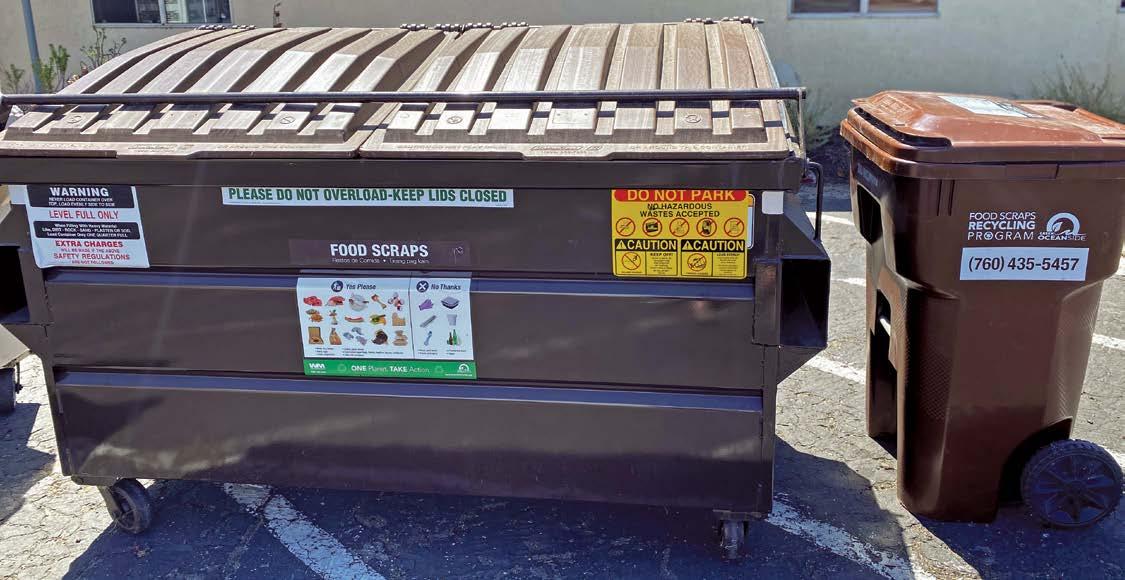
4 minute read
TEN THINGS YOU DIDN’T KNOW ABOUT THE
TEN

Advertisement
Things You Didn’t Know About the
Oceanside Athletic Club
WORDS: KRISTI HAWTHORNE PHOTOS COURTESY OF OCEANSIDE HISTORICAL SOCIETY
A mostly forgotten piece of history is the Oceanside Athletic Club once located at 315 Seventh Street (now Windward Way). In 1949, owners John and Marie Middlekauf held a grand opening of this new facility. Previously residing in West Hollywood, Marie Middlekauf was a wrestling promotor who was a “protégé” of James J. Jeffries—a heavyweight-wrestling champion. While wrestling was extremely popular, the Club brought more than wrestlers to Oceanside.







Wrestling match at OAC, 1951. 1. Before its grand opening and the first wrestling match was held there, the Oceanside Athletic Club welcomed Spade Cooley, “The King of Western Swing” who performed on July 4, 1949. Born Donnell Clyde Cooley, he was also an actor and television personality, hosting The Spade Cooley Show on KTLA-TV in Los Angeles. Cooley returned to Oceanside again in December of 1949. His fall from grace came in 1961 when he was arrested and convicted for the murder of his wife Ella Mae Evans.

2. On July 30, 1949, renowned jazz musician Woody Herman was the next entertainer to wow crowds. The Oceanside Blade Tribune reported: “One of the nation’s most famous band leaders, Woody Herman, will bring his entire orchestra to Oceanside Saturday night to present four hours of fine dancing music in the new Oceanside Athletic Club. This will be the first of a series of dances in the auditorium which will bring topflight modern and western dance orchestras to Oceanside.” It wouldn’t be Herman’s last appearance at the Club. In 1954, he returned for a concert to benefit the March of Dimes.
3. Two months later, Ted Fio-Rito was booked at the Club. Fio-Rito was an American composer and orchestra leader. He became popular performing on national radio broadcasts in the 1920s and 1930s. He also starred in a number of motion pictures during the 1930s and early 1940s, including Rhythm Parade in 1942.
4. If that wasn’t enough top-notch entertainment, Nat King Cole took the stage in September of 1949. At the time of his appearance Cole and his band were billed as “America’s number one recording group.” That year Cole was featured in a film entitled Make Believe Ballroom starring Jerome Courtland and Ruth Warrick, and released his fourth album with the King Cole Trio on Capitol Records.
5. Marie Middlekauf kept the entertainment coming with Tommy Duncan and His Western All Stars—a country swing band. Tommy Duncan got his start with Bob Willis and the Texas Playboys. He formed his own band that included his brother



Glynn Duncan, who performed at the arena more than once, was featured in the film South of Death Valley filmed just one year earlier. nightly, except for Fridays. Patrons could rent “clamp-on” skates for 60 cents, or shoe skates for 90 cents.
8. The Oceanside Athletic Club was also used for private parties and dances. In 1959, the rink was converted to accommodate the Weber Bros Circus.
9. With the coming of television, local wrestling matches dwindled in popularity and ended their reign at the Club by the late 1950s. For a number of years, the most popular and successful use of the building was that of a roller rink. 10. By the 1980s, the former Oceanside Athletic Club had seen better days. It was renovated in the 1990s, and registered as a state historical landmark in 1999. But sadly, the building that once reverberated with the sound of Woody Herman’s clarinet, echoed the cheers of wrestling fans, and the laughter of skaters was lost forever.
Circa 1940s


6. When the arena wasn’t used for wrestling matches or musical entertainment, it was used as a skating rink. In 1950, the Middlekaufs purchased skating equipment from Herbert R. Bachrach, who operated an outdoor Skating Ring at 1412 Mission Road.
7. During the week, the public could skate while the arena was used as a roller rink, with “8500 square feet of “maple flooring.” Skating was held










